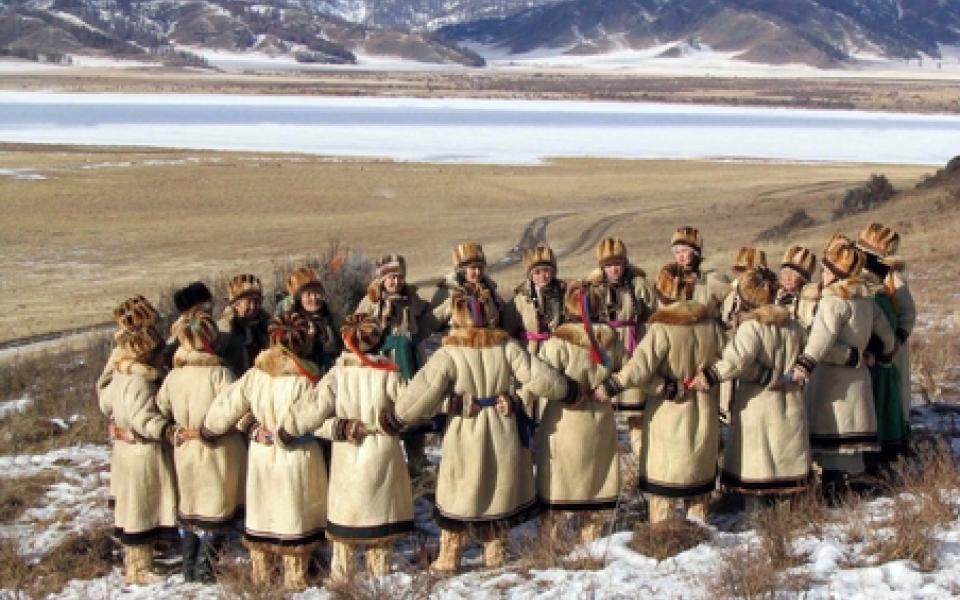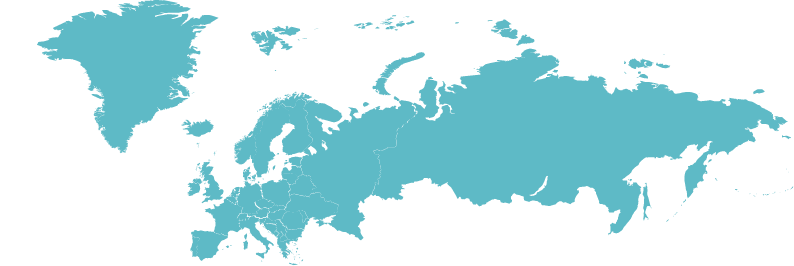
I couldn’t resist. URI’s newest Cooperation Circle resides in Siberia. And here are its members forming a circle. Striking, isn’t it? How did we ever go from a dream to Siberia? I have been in touch with the organizers, Galina Georgievna Emolina and Rimma Petrovna Zvereva, and we look forward to years of Siberia growing into URI’s possibilities.
For two weeks in April I played hooky from the office. Some URI friends put together a trip to Turkey, and I was the chaplain. Let me tell you about the first day, the last day and a couple of assignments—and revelations—along the way:
On the first day we visited His All Holiness, the Ecumenical Patriarch Bartholomew, in Istanbul. I have visited him before but never like this. He entered, sat on this throne and said, “Now, tell me about your Initiative.” We are making progress.
On the last day a Kurd, Sunni Muslim, scholar and URI leader in Turkey flew from Ankara and stayed up all night so that we could chat at breakfast. In my years I have never seen one person so enthralled with the vision and mission of URI. His name is Semsettin Turkan and he told me that on his university campus, each culture is celebrated with its flag, its food, its music and its religions.
In between, I led devotions each day in hotel lobbies and aboard a bus. We celebrated the lives of saints who lived in Turkey and followed the Holy calendar of Orthodox saints. Plus we sang a Melkite chant three times each day. On Sundays I celebrated the Eucharist in a hotel room. And I had prayers in Ephesus in a chapel commemorating Mary, Jesus’ mother.
Who were our pilgrims? The chief surgeon of a San Francisco hospital, the former Chair of Stanford’s Board, an inventor, the former head of the National Football League, a Merrill Lynch stockbroker, and on and on.
I gave a lecture on the seven Ecumenical Councils of the Church (4th to 8th centuries), and another on the four journeys of St. Paul, journeys which mostly traversed over what’s now Turkey. Oh my, I had to rely on seminary notes from 1958 – 61, but I staggered through.
And when I remembered again the gods and goddesses who reigned over this region, and then Hittites and Roman Legions, I reflected on what possible lessons the scarred fields of Asia Minor might have for a young URI.
Perhaps it is that the instinct to pray gets wed inexorabley to the instinct to conquer. Wouldn’t it be enough for Roman Emperors to triumph? Why do they also demand to be worshipped as gods? Or wouldn’t it be enough for Christianity to be one religion among many? What happens to its soul when the Emperor makes it the religion of the Empire?
Is there an inevitable arranged marriage between prayer and power? The ingredients of a crusade? The temptation of a theocracy? A religion of global reach never rules out the possibility of conquest. To have it all. To be the state religion. The dominant world religion. And the challenger religion will use all means possible – breeding, bombing, bribing – to overtake the front runner. Why? Because the duo of prayer and power that has been on display in Asia Minor for thousands of years might just be etched into human DNA.
For me, URI isn’t out to deny, or gloss over, this political reality. We can’t change human nature. But we can redirect human energy. Instead of pitting people of one religion against people of other religions, we can mobilize them to work together in creative, life-enhancing actions. We can guide them toward shared values that make healthier community possible.
In the same way that environmentalists are trying to take sun, wind and waves and fashion new sources of energy, URI is creating a new force from the ancient religious rivalries that have marked this land throughout history. Is there such a thing as an environmentalism of the sacred? If so, we’re it.
Perhaps the answer to the battlefield of Asia Minor can be found on the frozen tundra of Siberia.
